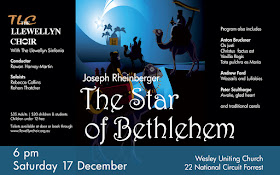Nocturnal Animals is without question a transporting tale, stylish
and clever, but it is also an onslaught of cruelty, yearning and pathos. A waking
dream that niggles away.
At its core,
it is about the things that really matter in life, the things that take some of
us a lifetime to figure out. Art gallery owner Susan (Amy Adams) once left behind
her loving relationship with Edward (Jake Gyllenhaal), an aspiring writer, for
a callow businessman more acceptable to her conservative establishment family.
For Edward, there was never any doubt about what he wanted, and he remained
true to himself as a teacher of literature at a school in Dallas. It has been
the kind of life that Susan dreaded living alongside him, and he has nursed the
devastation of their split some 20 years ago.
Their lives
intersect again when he sends Susan the draft of his new novel. It is dedicated
to her. What an incentive to begin reading! She settles down with it over the
weekend after the opening night success of her exhibition, an installation of naked
female figures, dancing and at rest.
We were
thrown into this event with the opening credits. It is a vision of unfettered female
flesh that the late Federico Fellini could have been created, or the figurative
artist Patricia Piccinini. The director, Tom Ford, has said that his moving
statues, the naked and obese older women, were meant to signify freedom of
expression, freedom from constraint. Well, I don’t really buy that.
It has
instead the chill of the fastidious fashion and style guru. With little effort made
to tie these nudes into the narrative, it’s just looks like shock value. And it
is surprising when so many of the aesthetic choices—like all those match cuts
that draw the parallel narratives together, and the plangent string motif—make such
an elegant tapestry. However, a steeliness is what you might expect in a tale
of revenge.
So, alone behind
the gates of the LA bunker she calls home, Susan begins to read. The book is about
Tony (Gyllenhaal as well), husband and father, who is on a family road trip,
making his way through the desert in West Texas at night. He is forced off the
road by two carloads of hoons who appear to be so malevolent that a passing police
car speeds up as it passes, rather than stop for Tony trying to wave it down.
In an old-model Mercedes a million miles from anywhere and beyond range of cell
phone coverage, Tony and his attractive wife and daughter are exceptionally
vulnerable.
I can
honestly say that these scenes of hijack and abduction are some of most
terrifying I have ever witnessed on screen. Ford also wrote the screenplay
which is adapted from a novel of the 1990s, Tony
and Susan, by Austin Wright.
Events take
their inevitable course, and Tony is left utterly devastated and alone, and the
investigation drags on inconclusively. The local detective (a wonderful
performance from Michael Shannon) seems slow to accept his version of events,
though scepticism would have served him among the folks he operated among, and
then proves to be terminally ill. It begins to feel incumbent on Tony to step
in. His eventual metamorphosis into pitiless avenger is one of the powerful and
convincing since Dustin Hoffman became a terrifying force to be reckoned with in
Straw Dogs all those years ago.
For this
ultra-intense tale to work as well as it does, we have immaculate direction by
Ford, and fine, measured performances from Adams and Gyllenhaal, as the two
characters who matter most. Shannon and many of the West Texan yahoos are also
excellent. However, others slip in and out of caricature, including Amy’s
heavily overdrawn mother, a Republican dowager played by Laura Linney.
For the locations
from the sterile interiors and LA to the Texan desert emptiness, director Ford also
wears his fashion designer credentials on his sleeve. At the same time, he sure
knows how to tell a story and has stitched the blistering tale together to form
a tapestry of some power.
‘Last
summer while driving at night on the interstate, I was forced off the road…’
It’s a haunting refrain from a brilliant piece of cinema. Primal terror. Beware.
Four Stars
Also published at Jane's blog






